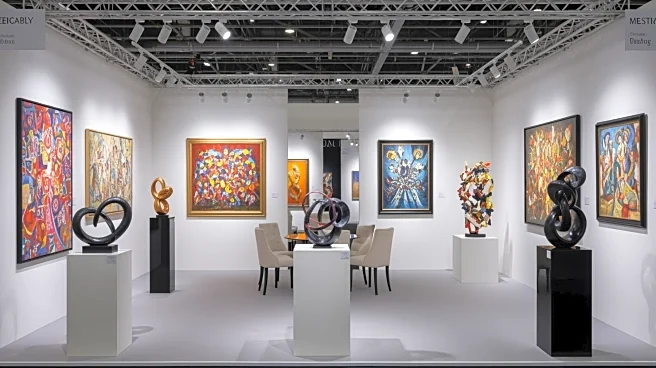What's Happening?
The Durham Lumiere festival, a biennial event known for showcasing world-class light art, is set to end after this year's edition. Organizers announced that the festival, which began in 2009, is no longer
viable due to rising costs. The festival has been a significant cultural event, drawing over 1.3 million visitors and generating more than £43 million for the local economy. Local artists, such as Lewis Hobson and Angela Sandwith, have expressed sadness over the festival's end, noting its role in providing opportunities for new talent and connecting Durham to expertise in London. Despite the festival's conclusion, there is hope that light art will continue to be a part of Durham's cultural landscape.
Why It's Important?
The end of the Durham Lumiere festival marks a significant cultural and economic shift for the city. The festival has been a major draw for tourists and a boost for local businesses, contributing substantially to the local economy. Its conclusion could lead to a decrease in foot traffic and economic activity in the area. For artists, the festival has been a platform for exposure and growth, and its absence may limit opportunities for emerging talent. The decision to end the festival highlights broader challenges in funding and sustaining large-scale cultural events amid rising costs.
What's Next?
In response to the festival's end, local stakeholders, including Durham BID and the City of Durham Parish Council, are exploring ways to fill the cultural and economic gap left by Lumiere. Discussions are underway to redirect funding towards other arts and culture events throughout the year. There is a focus on ensuring that the legacy of Lumiere continues in some form, with potential new events being considered to maintain Durham's status as a cultural hub in the North East.
Beyond the Headlines
The end of the Lumiere festival raises questions about the sustainability of cultural events in the face of financial pressures. It also highlights the importance of strategic planning and investment in the arts to ensure long-term cultural vibrancy. The situation in Durham could serve as a case study for other cities facing similar challenges, emphasizing the need for innovative solutions to support the arts and local economies.












